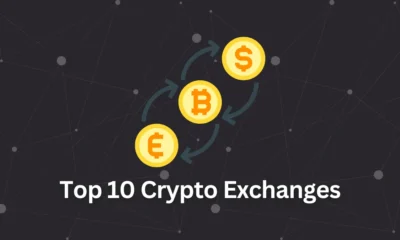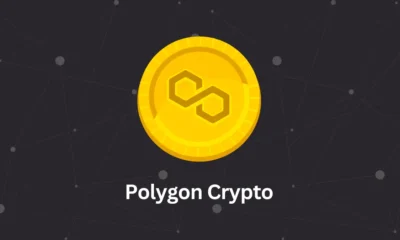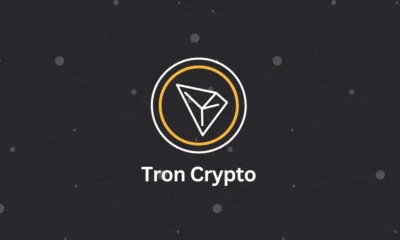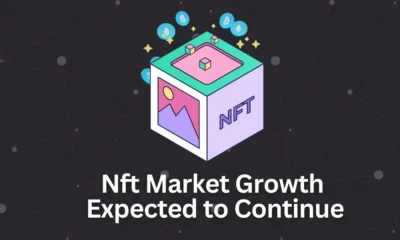Market Updates
NAVIGATING THE DYNAMICS: CRYPTO MARKET VS STOCK MARKET
In the ever-evolving world of finance, investors continually look for ways to diversify their portfolios and maximize returns.
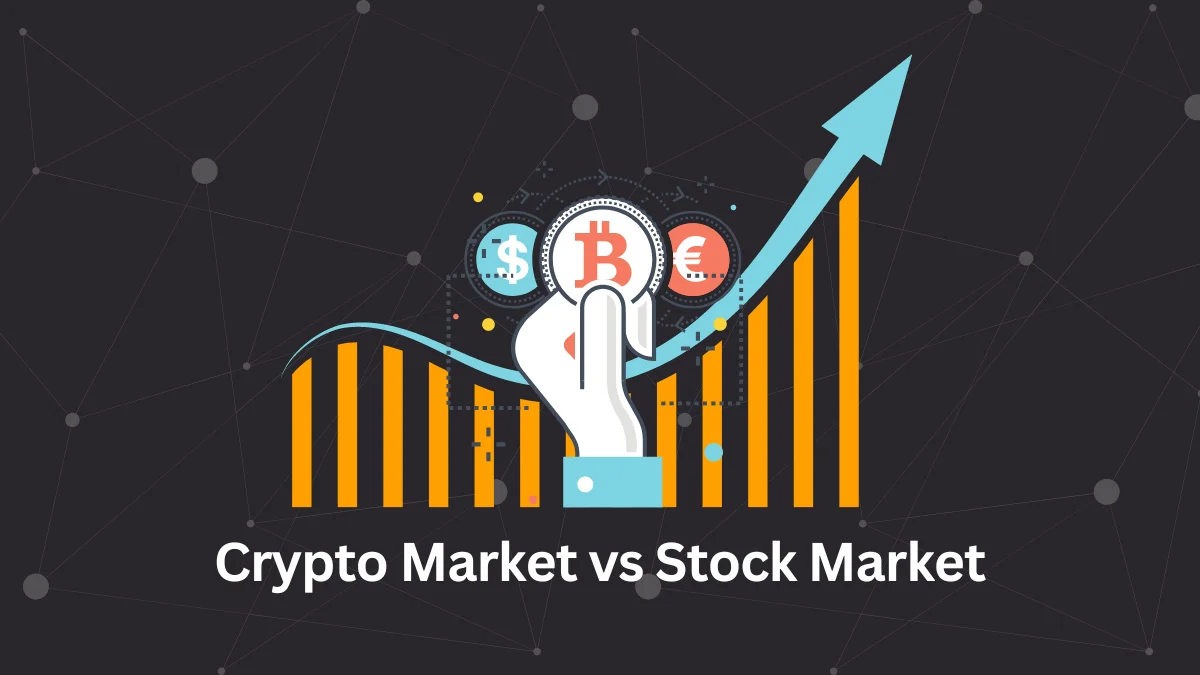
In the ever-evolving world of finance, investors continually look for ways to diversify their portfolios and maximize returns. Two of the most discussed areas for investment are the crypto market and the traditional stock market. The two business sectors offer special open doors and difficulties, drawing in revenue from different financial backer socioeconomics. This blog post delves into the subtleties of the financial trade versus the digital money market, examining the similarities, dangers, opportunities, and potential outcomes to provide investors with a comprehensive understanding of where their money should be allocated.
Understand the basics
Before contrasting the two, understanding their basic differences is fundamental. The securities exchange, a centuries-old stage, permits financial backers to purchase portions of public corporations. Its valuation is impacted by organization execution, monetary pointers, and market feeling. Going against the norm, the cryptographic money market is a computerized and decentralized stage where financial backers can trade advanced resources like Bitcoin, Ethereum, and many others. Its valuation is impacted by demand interest, mechanical advances, executive news, and demand opinion.
Volatility and Risk
One of the starkest contrasts between crypto and stock markets is their volatility. Digital currencies are known for their super cost variances, which can offer significant yields but accompany high gambles. The stock market also experiences volatility, but it’s generally less severe, offering a more stable investment option over the long term. The higher volatility in the crypto market is due to its relative infancy, smaller market size, and speculative nature, whereas the stock market’s maturity and regulation offer a more predictable environment.
Market Accessibility
The crypto market operates 24/7, providing continuous access to investors worldwide, without the need for traditional brokerage or banking systems. This nonstop exchangeability improves liquidity and considers quick response to worldwide occasions. The stock market, however, operates during set hours and is subject to more stringent regulations, making access somewhat limited in comparison. This difference in accessibility reflects the decentralized ethos of the crypto market versus the more structured, centralized nature of the stock market.
Regulation and Security
Regulation is another area where the two markets diverge significantly. The financial exchange is intensely managed by administrative bodies to safeguard financial backers, guarantee straightforwardness, and keep up with fair exchange rehearses. Cryptographic forms of money, on the other hand, are less controlled, prompting a higher gamble of misrepresentation and control.
However, this is changing as countries around the world are beginning to implement regulations to bring more security to the crypto market. As far as security, the two business sectors have confronted difficulties, yet the decentralized idea of digital currencies makes them innately impervious to conventional types of monetary extortion.
Investment Strategies
The differences in market dynamics necessitate different investment strategies. Stock market investors often rely on fundamental and technical analysis to make long-term investment decisions based on company performance and market trends. Crypto investors, however, must navigate a market driven more by sentiment and speculation, often employing a mix of technical analysis and keeping a close eye on market news and trends in blockchain technology.
Potential for Returns
The two business sectors offer the potential for significant returns. Historically, the stock market has provided a reliable, if slower, growth in investment over the long term. The crypto market, while much younger, has seen dramatic returns for some investors, though these can come with equally dramatic losses. The potential for exceptional yields in the crypto market is captivating yet requires a capacity to bear the risk and a comprehension of the market’s speculative nature.
Outlook
The future of both markets is a topic of much speculation. The protection trade, with its long history, is likely going to continue to be a groundwork of the financial world, with nonstop improvements in development and money-related things adding to its headway. The crypto market, while more unsure, is giving indications of developing, with expanded reception by shoppers, organizations, and even legislatures. Its combination with conventional money, through vehicles like Bitcoin ETFs, and its basic blockchain innovation’s true capacity, propose a promising, if flighty, future.
The decision to invest in the crypto market versus the stock market depends on an individual’s investment goals, risk tolerance, and interest in engaging with the respective market’s dynamics.
The securities exchange offers a steadier, directed climate for conventional speculations, while the crypto market presents a fresher, more unstable scene with the potential for exceptional yields. As the two business sectors keep on advancing, financial backers are encouraged to lead intensive examinations, remain informed about market drifts, and consider enhancing their speculations to alleviate risk. In the space of money, the open door has a ton of different plans, and understanding the extraordinary rates of the crypto and security exchanges is major for exploring the bewildering universe of financial planning.
Crypto Guides
Top 10 Crypto Exchanges for 2024: Best Platforms for Digital Currency
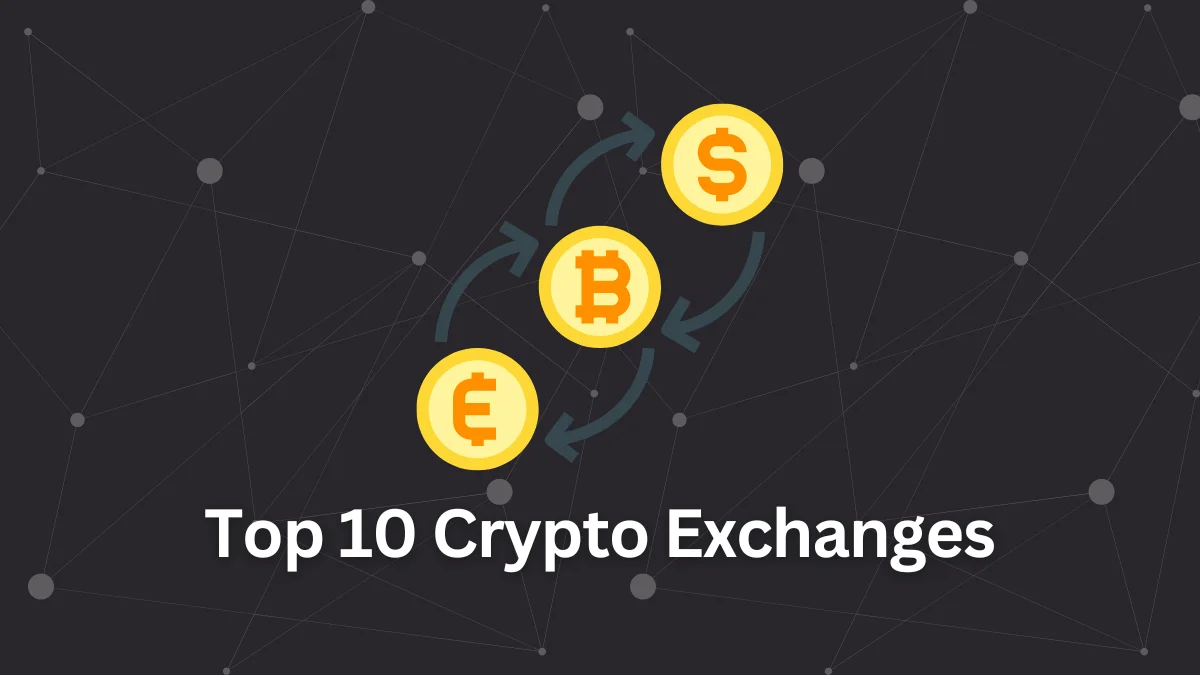
In the world of cryptocurrency, choosing the right exchange can make all the difference in your trading experience. With such a lot of alternatives to be had, finding a steady platform, person-friendly, and gives aggressive expenses is important. Whether you are a seasoned trader or just starting, this guide will help you navigate through the top 10 crypto exchanges of 2024.
CRYPTO EXCHANGE CURRENCIES
1. Binance
Overview
Binance is one of the largest and most popular crypto exchanges globally. Known for its giant range of cryptocurrencies and superior trading features, Binance caters to both novices and experienced traders.
Key Features:
– Variety of Cryptocurrencies: Offers over 500 cryptocurrencies.
– Low Fees: Competitive trading fees, especially for high-volume traders.
– Advanced Tools: Provides a suite of trading tools and options.
Why It Stands Out:
Binance’s large selection of cryptocurrencies and advanced trading options make it a favorite among serious traders. Its low costs and sturdy security features are a testament to its enchantment.
2. Coinbase
Overview:
Coinbase is one of the most user-friendly exchanges available. It is ideal for beginners looking to buy and sell cryptocurrencies with ease.
Key Features:
– Ease of Use: Simple interface and easy account setup.
– Security: Strong security features and insurance protection.
– Educational Resources: Provides a range of educational materials for new users.
Why It Stands Out:
Coinbase’s user-friendly design and strong security measures make it an excellent choice for newcomers to the crypto exchange world.
3. Kraken
Overview:
Kraken is known for its strong security features and wide range of supported cryptocurrencies. It offers advanced buying and selling tools for more skilled customers.
Key Features:
– Security: High levels of security with a solid track record.
– Diverse Options: Supports a wide range of cryptocurrencies and fiat currencies.
– Advanced Trading: Features like margin trading and futures.
Why It Stands Out:
Kraken’s robust security and comprehensive trading options make it a solid choice for both beginners and advanced traders.
4. Bitfinex
Overview:
Bitfinex is a popular choice for traders looking for advanced features and high liquidity. It gives a wide variety of cryptocurrencies and trading pairs.
Key Features:
– High Liquidity: Offers high liquidity and advanced trading options.
– Varied Cryptocurrencies: Supports a large number of cryptocurrencies.
– Advanced Features: Includes margin trading and lending.
Why It Stands Out:
Bitfinex’s advanced trading features and high liquidity make it ideal for experienced traders looking for more sophisticated tools.
5. Huobi
Overview:
Huobi is a global crypto exchange with a strong presence in Asia. It presents a complete trading platform with a wide variety of cryptocurrencies.
Key Features:
– Global Reach: Operates in multiple countries with strong security measures.
– Diverse Coins: Supports a broad range of cryptocurrencies.
– Advanced Trading Tools: Offers various trading options and tools.
Why It Stands Out:
Huobi’s global presence and extensive range of cryptocurrencies make it a versatile platform for traders around the world.
6. KuCoin
Overview:
KuCoin is known for its user-friendly interface and extensive selection of cryptocurrencies. It also offers features such as staking and futures trading.
Key Features:
– User-Friendly: Easy to navigate with a simple interface.
– Wide Range: Supports many cryptocurrencies and trading pairs.
– Additional Features: Staking and futures trading available.
Why It Stands Out:
KuCoin’s ease of use and additional features like staking make it a popular choice for both beginners and experienced traders.
7. OKEx
Overview:
OKEx is a comprehensive trading platform offering a variety of digital assets and trading options. It is known for its advanced trading tools and high liquidity.
Key Features:
– Advanced Tools: Provides a range of advanced trading tools and options.
– High Liquidity: Ensures efficient trading with high liquidity.
– Wide Range: Supports numerous cryptocurrencies and trading pairs.
Why It Stands Out:
OKEx’s advanced tools and high liquidity make it a strong choice for traders seeking a robust trading experience.
8. Gemini
Overview:
Gemini is a regulated exchange based in the U.S., known for its emphasis on security and compliance. It offers a secure platform for trading various cryptocurrencies.
Key Features:
– Regulated: Compliant with U.S. regulations and security standards.
– Security: Strong security features and insurance protection.
– Ease of Use: User-friendly platform with educational resources.
Why It Stands Out:
Gemini’s regulatory compliance and strong security measures make it a reliable choice for users prioritizing safety and regulation.
9. Bitstamp
Overview:
Bitstamp is one of the oldest crypto exchanges, known for its reliability and straightforward interface. It offers a range of cryptocurrencies and trading options.
Key Features:
– Reliability: Established exchange with a strong reputation.
– User-Friendly: Simple interface suitable for beginners.
– Range of Cryptos: Supports several major cryptocurrencies.
Why It Stands Out:
Bitstamp’s long-standing reputation and reliability make it a trusted platform for both new and experienced traders.
10. Gate.io
Overview:
Gate.Io gives a wide style of cryptocurrencies and revolutionary trading talents. It is thought for its competitive fees and numerous trading options.
Key Features:
– Variety: Supports a large number of cryptocurrencies.
– Innovative Features: Includes features like margin trading and lending.
– Competitive Fees: Offers low trading fees and costs.
Why It Stands Out:
Gate.io’s extensive range of cryptocurrencies and innovative features make it a valuable platform for traders looking for variety and flexibility.
Choosing the right crypto exchange depends on your individual needs and preferences. Each of those structures has its strengths, so recollect what features count number maximum to you—whether it’s advanced buying and selling equipment, protection, or a consumer-pleasant interface. By choosing the right alternative, you can enhance your shopping for and promote enjoyment, and make the maximum from your investments in the ever-evolving global of cryptocurrencies.
Market Updates
NFT MARKET GROWTH EXPECTED TO CONTINUE
NFTs has expanded dramatically, including intellectual property, real estate, music, movies, in-game items, and video games.
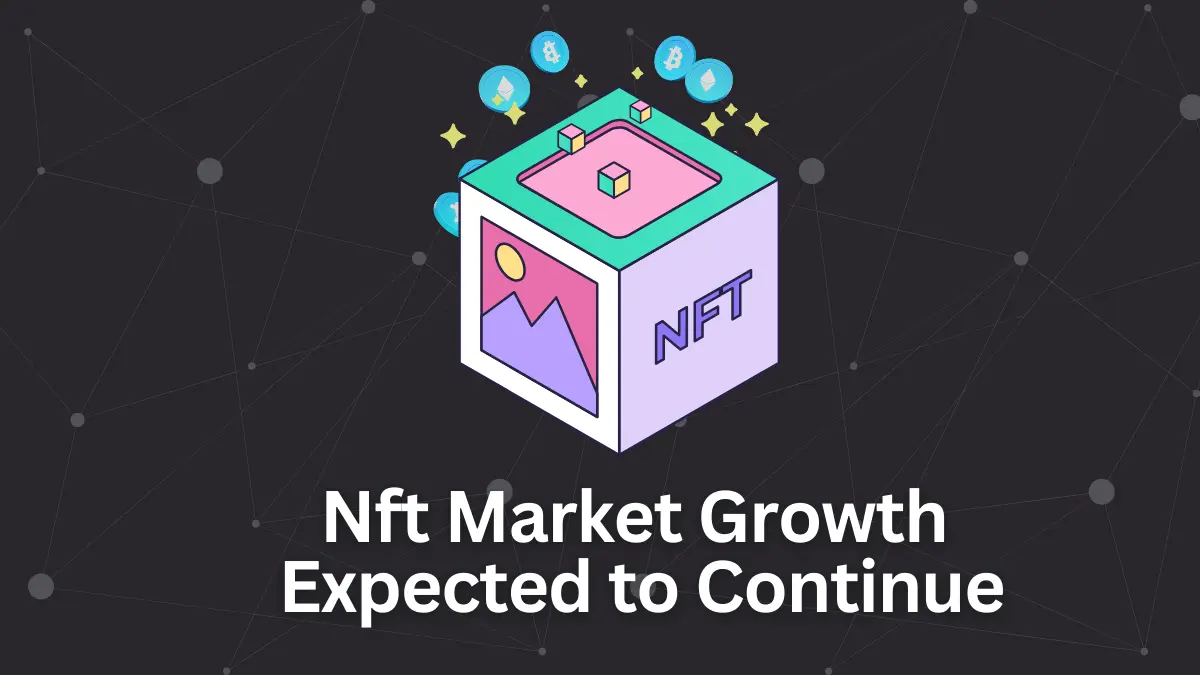
A wide spectrum of stakeholders, including investors, collectors, artists, and technologists, have expressed interest in the Non-Fungible Token (NFT) market since its introduction. Our understanding of digital ownership and value has completely changed as a result of NFTs’ exceptional capacity to securely and irreversibly reflect provenance and ownership of both digital and physical assets. Looking ahead, several significant patterns and variables indicate that the rise of the NFT market is not only anticipated to continue but may even pick up speed, changing a multitude of industries in the process.
The NFT Market’s Development
It has had an incredible journey from being a niche idea to becoming widely recognized. It was initially mostly connected to digital collectibles and art, thanks to websites like Open Sea and Crypto Kitties that opened up new avenues for online communication.
However, the range of goods covered by NFTs has expanded dramatically, including intellectual property, real estate, music, movies, in-game items, and video games.
Because more sophisticated and flexible NFT products can now be made, the NFT ecosystem has grown as a result of the advances made in smart contracts and blockchain technology.
Additionally, the public’s understanding and acceptance of NFTs have increased dramatically as a result of their integration into well-known social media platforms, celebrity and international brand endorsements, and other factors.
Key Drivers of NFT Market Growth
Increasing Digitalization of Assets
As our world becomes increasingly digital, the demand for digital ownership and verification tools grows. It remedies the digitalization issue by giving a safe and transparent means of proving ownership of digital goods. The realm of art is not the only industry affected by this digital transition; media, entertainment, and online retail are just a few industries where digital assets are vital.
Expanding Use Cases
It is finding new applications across various sectors, from digital identity verification to supply chain management. For example, It can be used to authenticate and track the provenance of luxury goods, reducing counterfeiting. It is giving artists in the entertainment sector new opportunities to engage with their audience and directly monetize their work.
Innovation in Finance
There are now more investment options thanks to the financialization of schemes like fractional ownership and NFT-backed loans. More people can now invest in high-value It and holders can leverage their holdings without having to sell them thanks to these improvements. We may anticipate more advanced financial products and services based on It as financial institutions and fintech businesses continue to investigate the possibilities of it.
Social and Community Involvement
A growing trend toward community-driven enterprises and economics is centered on It. It is being used by projects like Decentral and The Sandbox to build decentralized virtual worlds where people may trade, own, and develop virtual assets and land. These platforms create strong communities around common interests and objectives by serving as new forums for social engagement, education, and business in addition to providing entertainment.
Challenges and Considerations
The market confronts several obstacles that could affect its growth trajectory, notwithstanding the positive prognosis. Concerns over the potential environmental impact of blockchain technology, the need for more robust regulatory frameworks, and issues of intellectual property rights and copyright are some of the most significant issues that need to be resolved. Investors are also exposed to risks because of the market’s volatility and the speculative nature of many It trades.
The Path Ahead
In the future, cutting-edge technology like augmented reality, virtual reality, and artificial intelligence might become even more desirable and advantageous. These advancements open up new possibilities for it-based services and applications by producing more dynamic and captivating digital experiences.
Furthermore, as blockchain technology advances, improvements in scalability, efficiency, and sustainability are envisaged, addressing some of the current problems and constraints associated with it. Enabling a more integrated and accessible environment will be made possible by the continuous development of cross-chain interoperability. With the ability to completely alter digital ownership and value generation in the digital age, the NFT market is at a turning point in its development.
In the future, working together is super important for it to keep growing. Right now, they’re already being used in lots of different ways, with more people getting involved and new tech making things better. But there are still some problems to fix. Everyone involved in it needs to cooperate to make sure lots of different businesses can use it and handle the challenges of a fast-changing industry. The future of it is cool because they’re expected to become a big part of the digital economy as it keeps growing.
Market Updates
CRYPTOCURRENCY AND DECENTRALIZED FINANCE (DEFI)
Crypto and DeFi are at the moment presented as the driving force of the financial technology revolution as they offer a fundamentally fresh approach to transaction agreement and asset management.
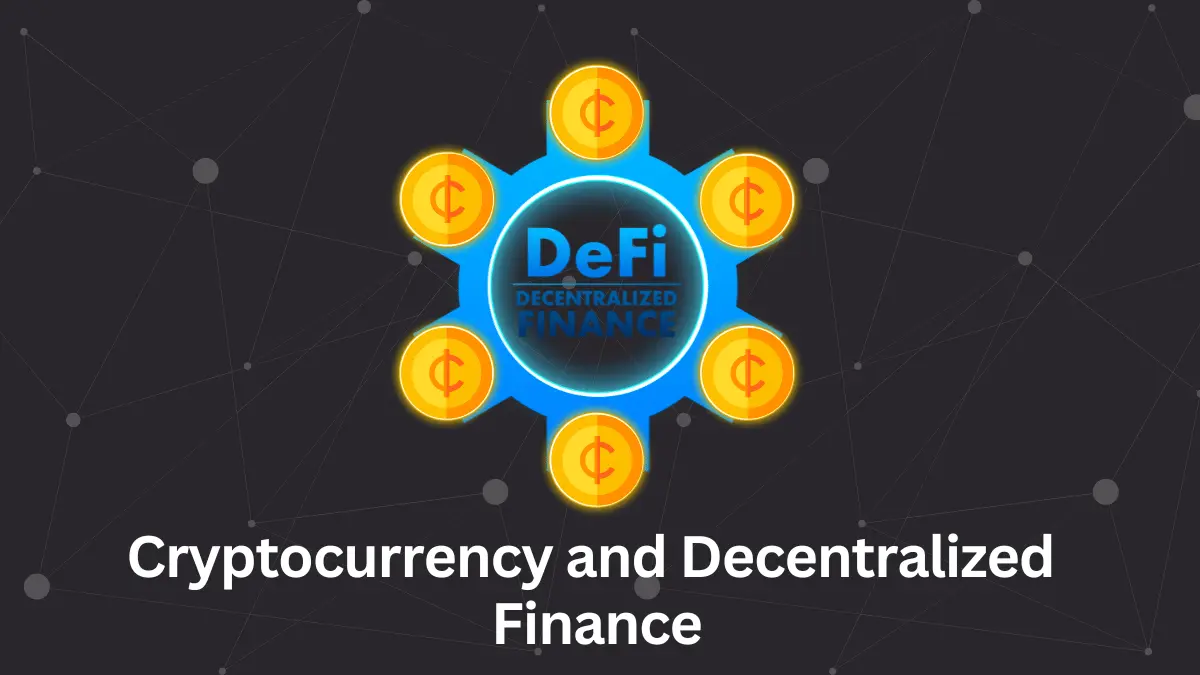
Writing a comprehensive blog on cryptocurrencies and decentralized finance (DeFi) demands going deeper into the contrary universe of blockchain technology that shows the ground-breaking uses of it and the new financial transactions’ paradigms. This blog will explain the inception of how the cryptocurrency and DeFi function and also their prospects and downsides and will also try to forecast the outcome on the globe. Cryptocurrencies and DeFi are relatively new phenomena that have been gaining prominence in the financial world, and their emergence has disrupted traditional financial systems, challenging the dominance of banks, securities exchanges, and other intermediaries.
Crypto and DeFi are at the moment presented as the driving force of the financial technology revolution as they offer a fundamentally fresh approach to transaction agreement and asset management. Cryptocurrency is the virtual or digital type of currency that uses cryptography (i.e. kind encrypted) for transaction security while instead DeFi stands for the decentralized finance applications that take tomorrow’s financial services and apply them to the Ethereum blockchain.
The Evolution of Cryptocurrency
Cryptocurrency involvement with Bitcoin was in 2009 by some group persons or by an individual under the known pseudonym of Satoshi Nakamoto. It was implemented as an electronic cash system in which individuals can enter into a financial transaction without any mediator. Ever since its emergence, the cryptocurrency market has grown significantly over the years and is now filled with various digital assets that not only function as a medium of exchange, but also as a store of value, and a tool for investment and speculation.
Defi: Redefining Financial Services
The term DeFi stands for Decentralized Finance which stresses the concept of Decentralized cryptocurrency by its application in different financial services like loans, saving and trading. DeFi platforms, built on a blockchain platform, were created to operate without any financial intermediaries like banks, brokerage firms, or exchanges. Thus, financial services become more democratic, and the capabilities to do even better with a minimum cost and the highest efficiency rate get to the highest possible level. Crypto and DeFi, as an emerging field, offer numerous opportunities for monetary and financial freedom.
The crypto movement and DeFi play a vital role in the future of finance and offer a myriad of advantages. They ensure visibility on each transaction, security using blockchain technology, and transactional activities with lowered cost and time. Also, the security of DeFi makes it clear that it is serving the populations of the unbanked and underbanked not only locally but internationally being a potential way to promote financial inclusion.
Challenges and Risks
Despite their huge possibilities, the future for cryptocurrency and DeFi is full of uncertainty. The volatility of cryptocurrencies, often meaning sharp changes in value, is the biggest risk; also regulation is a current problem in the DeFi sphere but this raises questions about consumers’ rights, possible fraud, and financial stability. In addition, systems may be unsuitable for different reasons like low levels of capabilities and advanced technologies which limits their implementation.
The Future of Finance
The taboo on the cryptocurrency and Decentralized DeFi future is a constantly present subject of speculation and debate. With the progressive technology and dynamic regulations, it will be very likely to see this wide acceptance in the field and use of these electronic assets and orbit in the core of the financial framework. The rise of stablecoins and DeFi insurance is a testament to the dynamic nature of the sector which addresses existing vulnerabilities and risks of ongoing exploitations.
Regulatory Landscape
The very fast development of cryptocurrency and the Decentralized DeFi regulatory framework is followed by individual states’ and financial institutions’ efforts to fit these innovations into the current legal system, without affecting consumers’ protection and without compromising the financial stability too much. Policy-makers will have to consider regulations in a meaningful way, regardless of whether the result is to spur innovation or stifle it.
Investment into Cryptocurrency and the Decentralized Finance Industry.
Cryptos, digital assets, and DeFi are opening new horizons where individual freedom and flexibility are the characteristics that come together with the hidden risks of volatile markets. Taking into consideration aspects such as investor research, grasping the technologies involved, and professionally considering the volatility and regulatory uncertainties, prospective investors should be mindful and act reasonably. Diversification and a long-term approach can help curtail some of the risks to society that come because of these new and innovative financial tools.
Crypto and Decentralized DeFi are changing the face of the global financial system, categorically differentiating themselves from the old-school one, thus paving the way for new means to conduct financial activities. Despite carrying a set of obstacles and uncertainties, they are worth trying as, in general, they have the potential to reshape the world pay system. In conclusion, as technology advances and spreads, we will see more and more the prominence of these technological tools in the determination of the financial future.
In the end, the trajectory of cryptocurrency and Decentralized DeFi will depend on a complex interplay of technological innovation, regulatory frameworks, and market dynamics. Stakeholders across the financial ecosystem must navigate these factors carefully to unlock the full potential of these revolutionary technologies.
-
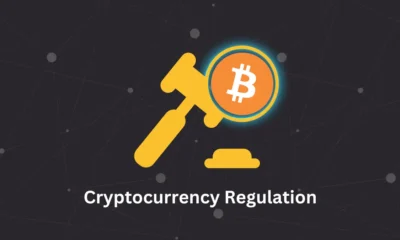
 Regulations1 year ago
Regulations1 year agoCRYPTOCURRENCY REGULATION
-
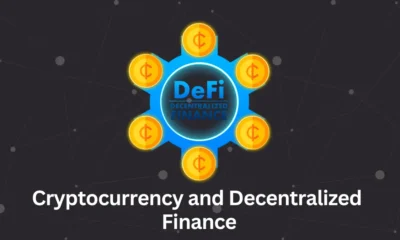
 Market Updates1 year ago
Market Updates1 year agoCRYPTOCURRENCY AND DECENTRALIZED FINANCE (DEFI)
-

 Market Updates1 year ago
Market Updates1 year agoHOW CRYPTOCURRENCIES MAY IMPACT THE BANKING INDUSTRY
-
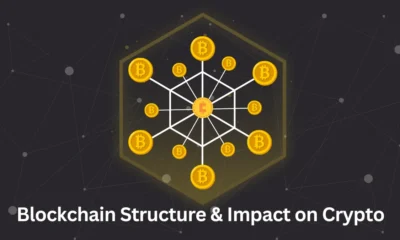
 Crypto Guides1 year ago
Crypto Guides1 year agoBLOCKCHAIN STRUCTURE AND IT’S IMPACT ON CRYPTOCURRENCY PRICES
-
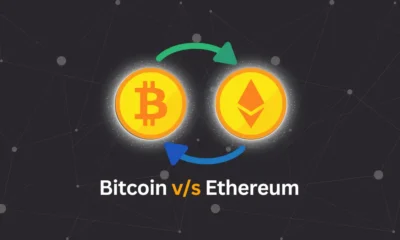
 Investment Tips1 year ago
Investment Tips1 year agoBITCOIN AND ETHEREUM, KNOW WHICH ONE IS BEST
-
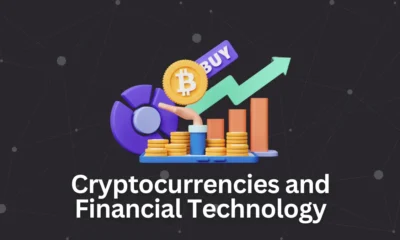
 Crypto Guides1 year ago
Crypto Guides1 year agoCRYPTOCURRENCIES AND FINANCIAL TECHNOLOGY
-

 Crypto Guides1 year ago
Crypto Guides1 year agoBEST CRYPTO FREELANCE WRITING
-
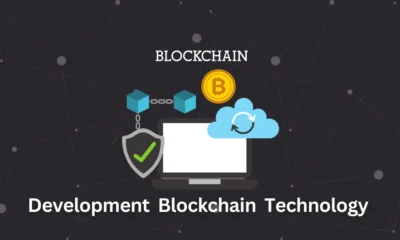
 Blockchain Technology1 year ago
Blockchain Technology1 year agoDEVELOPMENT OF BLOCKCHAIN TECHNOLOGY

